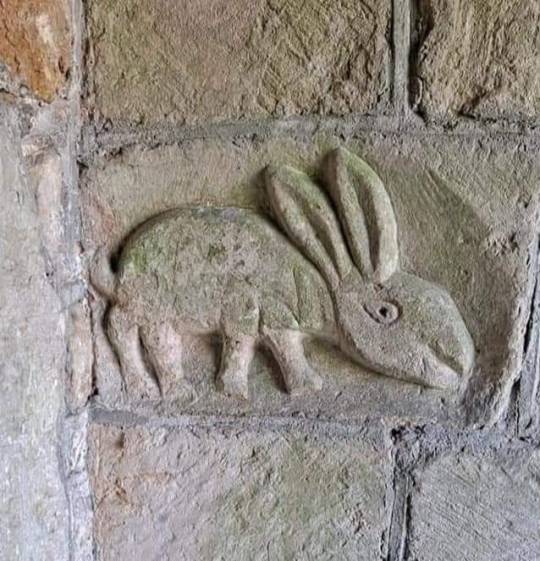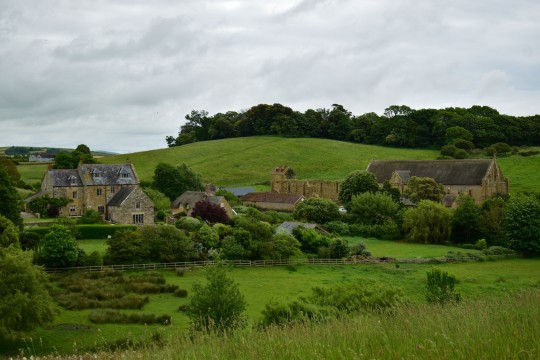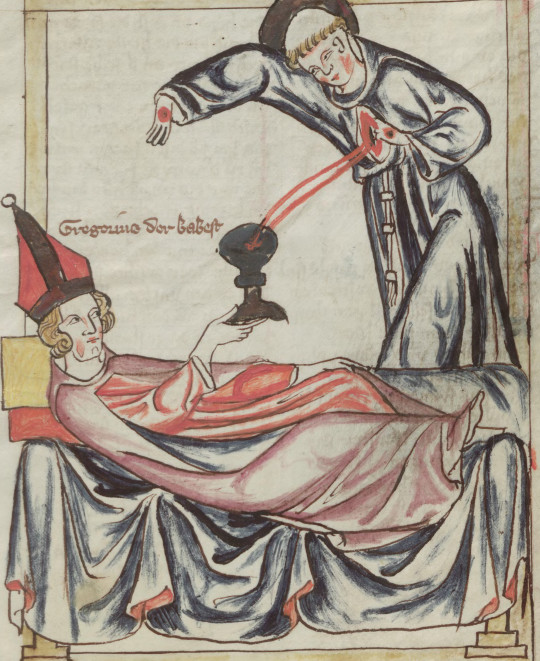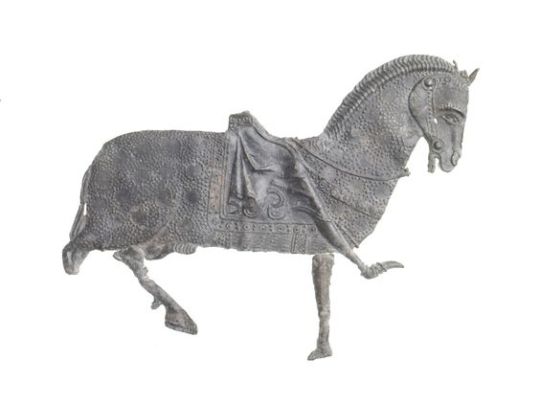#14th st
Explore tagged Tumblr posts
Text

I'll stand, thanks
6 notes
·
View notes
Text

the locusts from the abyss
illustration from an anglo-norman prose apocalypse, england, c. 1315–25
source: Oxford, Bodleian Library, MS. Selden supra 38, fol. 69r
442 notes
·
View notes
Text

Union Square teems with life on July 16, 1936.
Photo: Berenice Abbott via artblart
#vintage New York#1930s#Berenice Abbott#Union Square#street photography#vintage summer#vintage NYC#14th St.
119 notes
·
View notes
Text

St. Michael and the Dragon, unknown artist of the Sienese School, 14th century
#art#art history#Middle Ages#medieval#medieval art#religious art#Christian art#Christianity#Catholicism#St. Michael#Archangel Michael#dragon#dragons#Sienese School#International Gothic#Italian Gothic#Italian art#Trecento#14th century art#tempera on panel#National Museum of Western Art
399 notes
·
View notes
Text
I'M SO TIRED I FORGOT IT WAS SEPTEMBER 14TH

Happy St. Cassian Chamber Choir death day I guess lmao
#September 14#ride the cyclone#rtc#rtc musical#tw death mention#tw death#cw death#cw death mention#noel gruber#noel rtc#mischa bachinski#mischa rtc#ocean o'connell rosenberg#ocean rtc#jane doe#jane rtc#constance blackwood#constance rtc#ricky potts#ricky rtc#Richard Potts#st cassian chamber choir#saint cassian chamber choir#september 14th
67 notes
·
View notes
Photo

Detail Giovanni del Biondo, Martyrdom of St Sebastian, circa 1375-1380 Paint on wood
https://en.wikipedia.org/wiki/Giovanni_del_Biondo
#hannibal#nbc hannibal#art that reminds me of hannibal#Giovanni del Biondo#paintings and mostly 2d art#14th century art#gothic painting#proto renaissance#saint vibes#st sebastian and st sebastian adjacent#human(ish) bodies#queue
77 notes
·
View notes
Text

The Anglo-Saxon chronicler Bede gave us this simple explanation for the name of the festival. "Eostremonath has a name which is now called Paschal month, and which was once named after a goddess of theirs named Eostre, and in her honour feasts were held in that month. Now they name the Paschal season by her name, calling the joy of the new rite by the time-honoured name of the old rite." Nothing else is known about Eostre, although Jacob Grimm did speculate that the old German name Ostara was probably her cognate. He was trying to work backwards from traditions he saw in his time and it was only a theory, but it would be logical to assume a connection with Eostre in the lands the Anglo-Saxons originated from. Eggs and bunnies are not connected in any way to Eostre, these traditions come about much later on and within a Christian context. Eggs were prohibited during Lent so people would have had a glut of them to use at Easter, and I have no doubt lots of them were painted and blessed for the occasion. The Easter bunny was always a hare, never a rabbit, and hopped out of the mists of 17th century German Lutheran folklore. During the Medieval era it was also commonly believed that hares could impregnate themselves, leading to an association with Mary. So here's a medieval Easter bunny, a 14th century carving of a hare at, you guessed it, the Church of St Mary, at Elmley Castle in Worcestershire. Have a great Easter! ~ Hugh Williams On another note: "There is simply no evidence for this commonly repeated myth. It’s not factually true and is simply speculation by one monk in 725. There is no evidence that he was correct about this. There are no references or images of Eostre anywhere else or in anything else at all. He also documents Woden and Thor, but they are verified as deities that were worshiped, but not so with Eostre. In fact it appears to be far more probable that the name of the lunar month Eosturmonath is actually a reference to “the month of opening” for the rather obvious reason that it is springtime. When it comes to this goddess, we have no images, no carvings and no legends, just this single reference by Bede that appears to be speculation, and so that is why most folklorists will dismiss the assertion that Easter is named after the goddess Eostre as a myth. Ronald Hutton, expert in pre-Christian religion, argues that: "It is equally valid, however, to suggest that the Anglo-Saxon ‘Estor-monath’ simply meant ‘the month of opening’ or ‘the month of beginnings’, and that Bede mistakenly connected it with a goddess who either never existed at all, or was never associated with a particular season but merely, like Eos and Aurora, with the dawn itself.’3" Hard to find a better source than Prof Hutton." ~ Matt Lewis
and this link for further reading: https://www.timesofisrael.com/the-pagan-goddess-behind-the-holiday-of-easter/?fbclid=IwAR2IhpTsPjt0pMkSyyR0w4COXVI3d3QCSzVA6bGzTH1sYWgDAsuctNIrpaw_aem_AbAxlLoqWL9_Hf4CqCBG3mcZ8C_jut9RiJ6rl_5cGae-d0HHJMpMQ0NmAQsYgZkITXjnee-AcUwFAHZAqf_6rtGF
#Ostara#Hare#Tis The Season#Wheel of the Year#Paschal#Eostre#Anglo-Saxons#eggs#Easter#traditions#ancient ways#sacred ways#easter bunny#folklore#folkways#medieval#14th century carving#Church of St Mary#Elmley Castle#Worcestershire#England#United Kingdom#Ancestors Alive!#What is Remembered Lives#Memory & Spirit of Place#Bede#Anglo-Saxon Chronicles#Professor Ronald Hutton#Professor Hutton#Ronald Hutton
16 notes
·
View notes
Text



Princess Anne attends day 3 'St Patrick's Thursday' of the Cheltenham Festival at Cheltenham Racecourse on March 14, 2024.
#Princess Anne#Princess Royal#St Patrick's Thursday#Cheltenham Festival#England#Cheltenham Racecourse#March 14th 2024#The Royal Family#The British Royal Family#Amazing Women#British Royal Family
12 notes
·
View notes
Text

happy valentine's day for everyone who already found love and for those who are looking! For aro folk, just have a happy Tuesday 14th in february, lol
#my art#shadowhunters#magnus bane#malec#alec lightwood#alexander lightwood#st valentines#valentines day#february 14th#happy valentine's day
109 notes
·
View notes
Text










Visit to St Catherine's Chapel in Abbotsbury. These images are views of the chapel, inside and outside. As well as views of the surrounding landscape.
#photography#landscape#architecture#history#14th century#st catherine of alexandria#dorset#Abbotsbury#june 2024
5 notes
·
View notes
Text
Doctor Who had facing your insecurities with another version of yourself without anything weirdly incest-y happen who would’ve thought that was possible

#doctor who 60th anniversary#loki series#14th doctor#15th doctor#Loki#sylvie#anti sylki#tw inc*st#Doctor who
8 notes
·
View notes
Text


pope gregory ix catching blood emitted from the side wound of st. francis who appears to him in a vision
in a vita of st. francis of assisi, illuminated manuscript, germany, late 14th c.
source: Kraków, Biblioteka Jagiellońska, Ms. Berol. germ. quart. 357. p. 41
#medieval art#14th century#st francis#pope gregory ix#sidewound#christian iconography#illuminated mauscript#medieval#saints
495 notes
·
View notes
Text

Union Square, 1952.
Photo: Dorothea Lange via MoMA
#vintage New York#1950s#Dorothea Lange#Union Square#b&w photography#profile#street photography#S. Klein#14th St.
89 notes
·
View notes
Text

Adoration of the Virgin by St. John the Baptist and St. Catherine, tentatively attributed to Gherardo Starnina, late 14th/early 15th century
#art#art history#Gherardo Starnina#Middle Ages#medieval#medieval art#Gothic art#International Gothic#Italian Gothic#religious art#Christian art#Christianity#Virgin and Child#Madonna and Child#John the Baptist#St. Catherine of Alexandria#Trecento#Quattrocento#14th century art#15th century art#Museu Nacional d'Art de Catalunya
170 notes
·
View notes
Text
Watching st trinian's 2. Jodie whittaker and David tennant are in it
That's five Doctors in one movie
#14th doctor#13th doctor#metacrisis doctor#tentoo#10th doctor#jodie whittaker#david tennant#st trinians#st trinians 2
3 notes
·
View notes
Text

Part of a pilgrim badge from the shrine of St Thomas Becket at Canterbury Cathedral. This badge depicts part of the scene of Thomas Becket returning from exile in France and refers to his journey from Sandwich to Canterbury on horseback. All that remains of this badge is Becket’s dappled horse and the lower part of Becket’s body. Becket’s cloak hangs in folds across the saddle and his right leg is stretched out straight ahead. He wears pointed shoes.
Thomas Becket was born in London in 1118. He became a royal official and a great friend of King Henry II. He was made Archbishop of Canterbury in 1162. He argued with King Henry II, and fled to France in 1164. Thomas Becket returned to Canterbury in 1170 and was killed in the cathedral by four knights who thought this would please the king. People were outraged at the murder of an archbishop on holy ground and Becket was made a saint. He became one of the patron saints of London. Many Londoners travelled to Canterbury to pray at the shrine there and bought badges and ampullae (small bottles for holy water) as souvenirs of their pilgrimage.
Late Medieval; late 14th century
#St Thomas Becket#Late Medieval#late 14th century#pilgrim badge#patron saints of London#patron saint#museum of london
19 notes
·
View notes